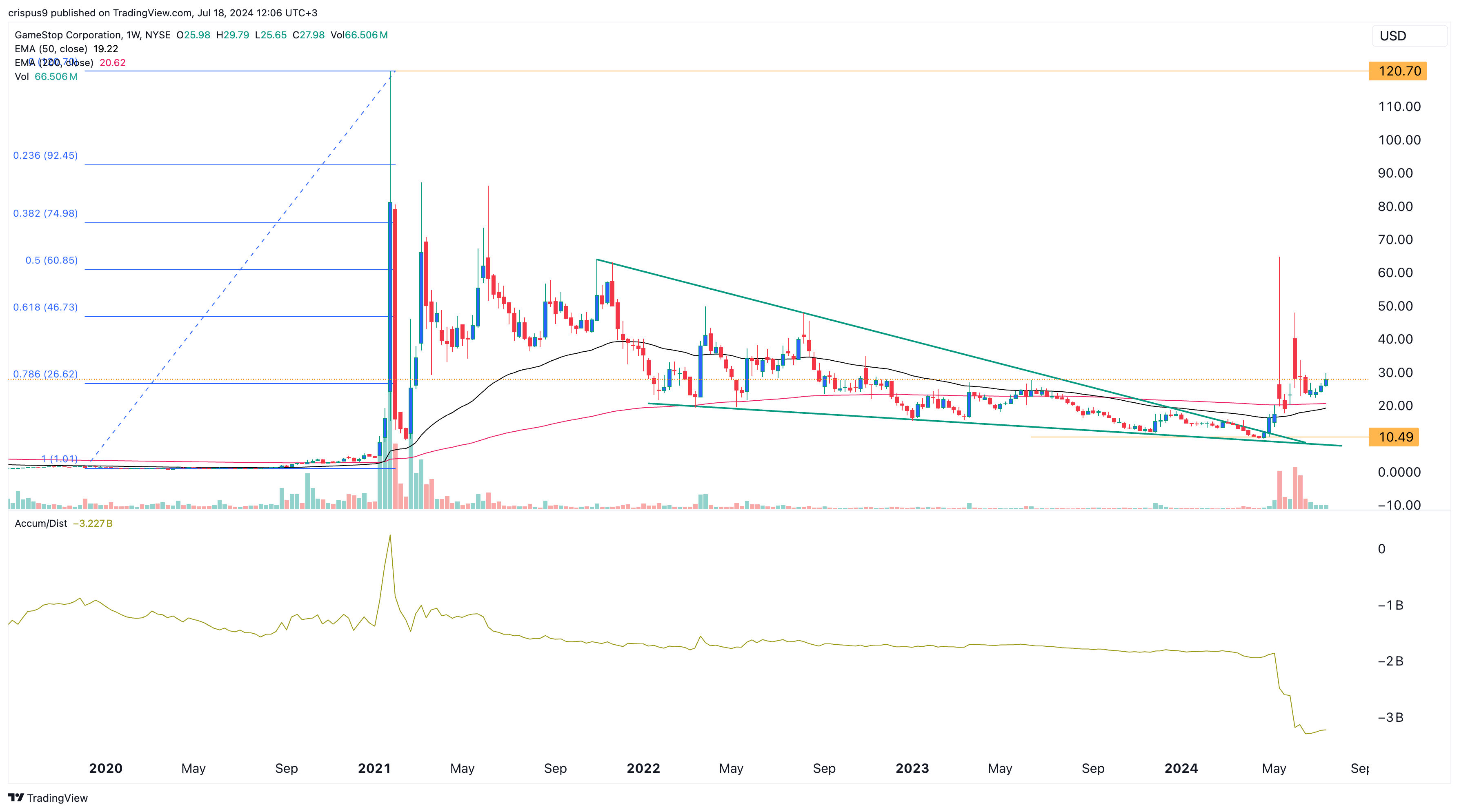GameStop (NYSE: GME) stock price has done well this year, as it jumped by almost 60%. It has outperformed the Nasdaq 100, S&P 500, and Dow Jones indices, which have moved to their all-time highs.
The GME share price still remains sharply below the highest point this year. It has collapsed by over 57% from the year-to-date high as the meme stock craze faded.
Luckiest company in Wall Street
GameStop has become the luckiest company in the United States. It has remained afloat even as the video game industry has remained under pressure.
Most people have stopped buying video games in stores and opted to download them from their independent websites or other stores.
This trend will continue as the concept of video subscriptions continues. For example, unlike in the past when EA Sports games like FIFA were sold in stores, users today just pay a small subscription and get access to these games.
GameStop’s financial results show that its business is not doing well as its annual revenues have continued to drop. Its annual revenue dropped from over $6.46 billion in 2019 to about $5.2 billion in the last financial year.
Analysts believe that this trend will continue, which is a reflection of how bad things have gotten. The average estimate is that its revenue will drop to $4.25 billion this year followed by $4.09 billion next year.
GameStop’s luck started in 2021 when the stock became a popular name among meme stock investors. At the time, the stock surged to over $120.70, pushing its total market cap to over $80 billion.
That surge helped GameStop to raise cash by selling equity. It raised $1.67 billion in 2021, which helped it to boost its balance sheet and fund its turnaround efforts.
The luck ended in March 2021 and the stock plummeted to a low of $10 earlier this year. It then came back in May as the stock soared to almost $70. Again, the company used this stock surge to raise cash.
Bad company, strong balance sheet
As a result, the resulting company is unique for two reasons. In the first part, it is a business in an unwanted sector that is slowing and one that will likely not exist in the next decade.
On the other hand, GameStop has one of the best balance sheets in the retail industry. It raised $2.3 billion in an at-the-market offering in June. As such, on top of the $1.08 billion it ended the first quarter with, it means that the company has over $3 billion in cash.
At the same time, GameStop has little debt. It ended the quarter with a low-interest debt from the French government that it received during the Covid-19 pandemic.
The most recent financial results show how low the company has fallen. Its quarterly revenue dropped from $1.23 billion in q1’23 to $881 million. It also narrowed its quarterly loss from $50.3 million to $32.3 million.
Still, I expect that the company will continue burning cash in the next few years. On the positive side, its strong balance sheet means that the company can go on for almost a decade without raising cash. It can also continue generating a profit by packing its funds in government bonds.
Indeed, the most recent annual results show that its cash hoard brought in $49.5 million in interest and investment income. That was an increase from the $9.5 million it made a year earlier.
The challenge is that the company will ultimately lose these funds when the Fed starts cutting interest rates, possibly in September.
Further, there is a concern about the company’s valuation since it has a market cap of over $12 billion. With its little debt, it has an enterprise value of $11.6 billion, which is still high for a retailer making $4 billion in annual revenue and losing money.
Shorting GameStop, which has a 10% short interest, is risky as the past short-squeezes have shown.
GameStop stock price forecast

GME chart by TradingView
Turning to the weekly chart, we see that the GME stock price rebound happened after forming a falling wedge chart pattern. In most cases, this is one of the most bullish patterns in the market, which explains why it bounced back.
GME has remained above the 78.6% Fibonacci Retracement point point. Also, it sits about the 200-day and 50-day Exponential Moving Averages (EMA), a popular bullish sign.
The accumulation and distribution (AD) indicator has dropped sharply but is showing signs of bouncing back. Its volume bars have been green in the past four straight weeks.
Therefore, the stock will likely continue rising as the earnings season goes on and as hopes of Federal Reserve interest rate cuts rise. In most cases, Fed rate cuts leads to animal spirits in the financial services industry and demand for risky assets.
The post GameStop (GME) stock analysis: luckiest company in Wall Street? appeared first on Invezz






